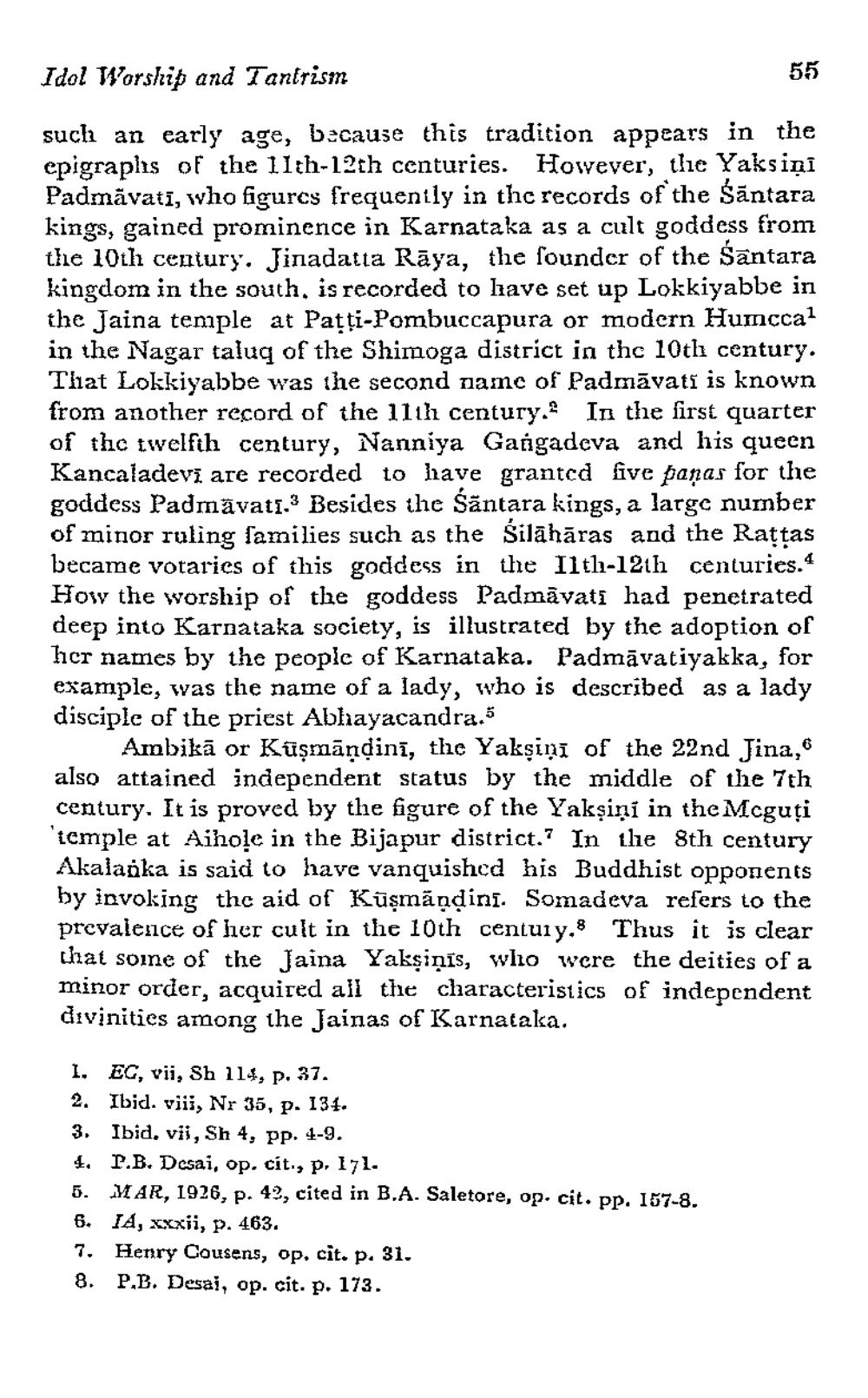________________
Idol Worship and Tantrism
55
such an early age, because this tradition appears in the epigraplis of the 11th-12th centuries. However, the Yaksiņi Padmavatī, who figurcs frequently in the records of the śāntara kings, gained prominence in Karnataka as a cult goddess from the 10th century. Jinadatta Rāya, the founder of the Santara kingdom in the south, is recorded to have set up Lokkiyabbe in the Jaina temple at Pațți-Pombuccapura or modern Humccal in the Nagar taluq of the Shimoga district in the 10th century. That Lokkiyabbe was the second name of Padmāvati is known from another record of the 11th century. In the first quarter of the twelfth century, Nanniya Gangadeva and his queen Kancaladevi are recorded to have granted five paras for the goddess Padmavatq. Besides the śāntara kings, a large number of minor ruling families such as the Silāhāras and the Rattas became votaries of this goddess in the Ilth-12th centuries. How the worship of the goddess Padmāvati had penetrated deep into Karnataka society, is illustrated by the adoption of her names by the people of Karnataka. Padmāvatiyakka, for example, was the name of a lady, who is described as a lady disciple of the priest Ablayacandra.5
Ambikā or Kūşmāņdinī, the Yakşīņī of the 22nd Jina, also attained independent status by the middle of the 7th century. It is proved by the figure of the Yakşiņi in the Mcguți 'icmple at Aihole in the Bijapur district.? In the 8th century Akalañka is said to have vanquished his Buddhist opponents hy invoking the aid of Kūşmāņdini. Somadeva refers to the prevalence of her cult in the 10th century. Thus it is clear that soine of the Jaina Yaksiņīs, wito were the deities of a minor order, acquired all the characteristics of independent divinitics among the Jainas of Karnataka.
1. EG, vii, Sh 114, p. 37. 2. Ibid. viii, Nr 35, p. 134. 3. Ibid. vii, Sh 4, pp. 4-9. 4. P.B. Desai, op. cit., p. 171. 5. MAR, 1926, p. 42, cited in B.A. Saletore, op. cit. pp. 157-8. 6. JA, xxxii, p. 463. 7. Henry Cousens, op. cit. p. 31. 8. P.B. Desai, op. cit. p. 173.




